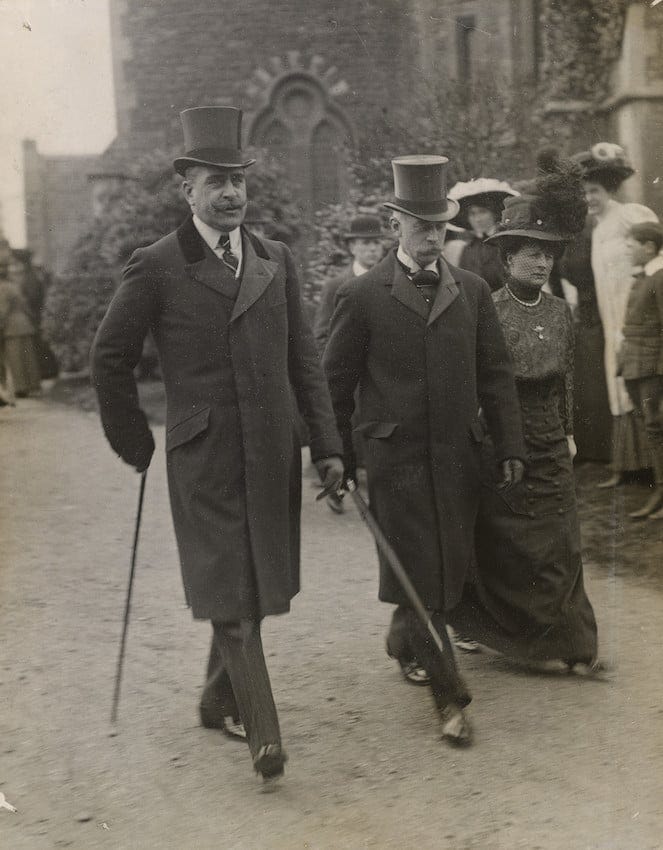A Prince, An Affair, and A Collection of Royal Emeralds: The (Un)sealed Will of Francis of Teck (Part 1)
Queen Mary was so shocked by the contents of her brother's will that she moved to have it sealed, setting a precedent that lasted for more than a century–until now.
For more than a century, nearly every will made by a member of the British royal family was sealed, making its contents inaccessible to members of the public. In February 2023, however, the President of the Family Division’s Office in Britain published a new procedural note indicating that some royal wills could now be unsealed. Nine of them were officially unsealed in June, and today, I’m bringing you the first of two articles on the contents of the infamous will that started it all: the last will and testament of Queen Mary’s brother, Prince Francis of Teck.
The telephone rang at Marlborough House shortly after four o’clock in the morning on Saturday, October 22, 1910. The servant who answered the call took a message from staff members at the facility in Welbeck Street where Queen Mary’s younger brother, Prince Francis of Teck, had been a patient for more than a week. By four-thirty, the King and Queen were being driven to the West End, where they rushed to the prince’s bedside. Prince Francis’s health, precarious for months, had taken a decided turn for the worst.

Frank, as he was generally known within the family, had been suffering for some time with health problems related to his nose and sinuses. In the summer of 1910, the 40-year-old prince spent three weeks at a health spa in Marienbad. After returning to the United Kingdom, he made a brief trip to Ireland and then headed back to London, where on September 17 he was operated on by Dr. Somerville Hastings, a renowned oral surgeon from Middlesex Hospital. The operation, the Evening Standard reported, was an attempt “to clear a passage between the upper jaw and the nose,” and according to the reporter, the procedure was “perfectly satisfactory.”
Frank’s sister and brother-in-law were at Balmoral in Scotland during the operation. Progress reports were sent to Queen Mary as Frank spent several days recovering in the hospital. About a week after the surgery, Frank’s health was so improved that he was able to take a train from London to Balmoral, where he planned to spend more time convalescing at the castle. By the end of September, he was feeling well enough to join his sister on a visit to see Lord and Lady Aberdeen at their estate in Tarland.
The crisp autumn air in Scotland may have been invigorating, but Frank’s stay at Balmoral turned out to do more harm than good. By the beginning of October, he had contracted an infection. What initially seemed like a mere cold quickly developed into something much more serious. The King’s personal physician, Sir James Reid, was treating the prince at the castle. Newspapers wrote that it was “probable” that Frank would not be able to return to London for “a fortnight.” Though her brother’s condition was described as serious, King George and Queen Mary had to leave Frank behind and head back to London. There, they were part of the formal send-off for the Duke and Duchess of Connaught, who were heading to South Africa with their daughter, Princess Patricia, for the opening of the Union’s newly-formed parliament.

Once again, Frank’s health seemed to rebound. He was well enough on Thursday, October 13 to take a train back to London. And then, just after he had arrived back in the capital on Friday, his condition began to rapidly deteriorate. The Observer wrote that “a serious relapse occurred during the day, necessitating his entering a private nursing home in the afternoon, and when an acute form of pleurisy was diagnosed an operation was deemed advisable. This was performed during the evening.” Once again, the King and Queen were sent regular updates on her brother’s health and visited him regularly. By Tuesday evening, the prince had weakened considerably, and an official bulletin stated that his condition had given “cause for great anxiety.”
After arriving at 15 Welbeck Street in the early hours of Saturday, October 22, King George and Queen Mary spent several hours at the bedside of the prince before motoring back to Marlborough House. Shortly, though, they were summoned to return. At eleven o’clock in the morning, surrounded by the King’s chaplain and close family members (the King and Queen, the Duchess of Teck, and Prince and Princess Alexander of Teck), Frank passed away at the age of 40. Another brother, Prince Adolphus, Duke of Teck, was so exhausted after keeping a regular vigil at his brother’s bedside over the course of the week that he had become ill himself. He summoned the strength to make one final visit to view his brother’s body a few hours after Frank’s passing. Queen Mary went home, but she also returned later for one last glimpse of her brother before he was placed in his coffin.
Marlborough House was inundated with callers in the hours after Frank’s death. The Telegraph explained that they weren’t aiming to actually see or speak with the royals, but rather simply to sign the guest book and be recorded among those who wished to offer their condolences to the King and Queen. A long roster of diplomats and ambassadors were among the visitors, as was the Archbishop of Canterbury. A log of visitors was published in the papers, including a laundry list of aristocratic callers. Near the top of that list were two names that were particularly meaningful, at least in private: the Earl and Countess of Kilmorey.
Keep reading with a 7-day free trial
Subscribe to Hidden Gems to keep reading this post and get 7 days of free access to the full post archives.


